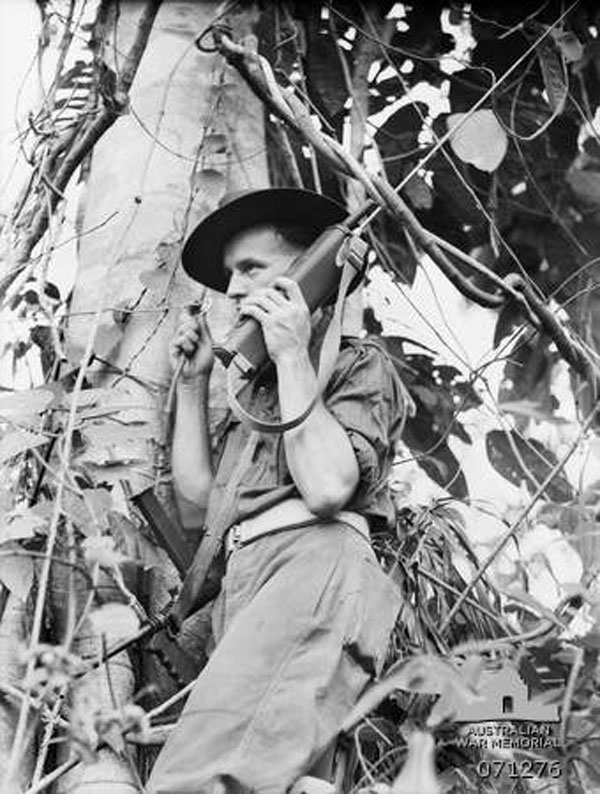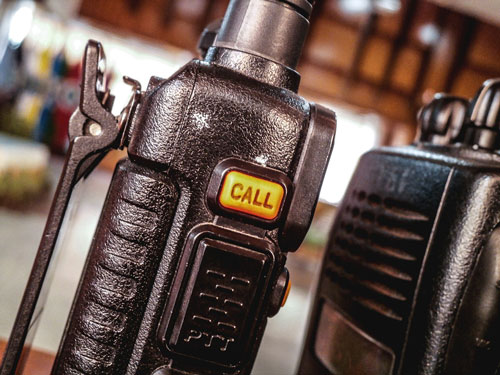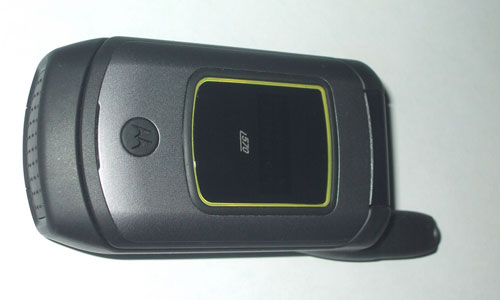Do You Copy?
How the lineage of the walkie-talkie reaches from World War II to the modern cell phone. Walkie-talkies even inspired a major cell phone network.
Sponsored By … You?
If you find weird or unusual topics like this super-fascinating, the best way to tell us is to give us a nod on Ko-Fi. It helps ensure that we can keep this machine moving, support outside writers, and bring on the tools to support our writing. (Also it’s heartening when someone chips in.)
We accept advertising, too! Check out this page to learn more.
“[O]nly the bounds of human imagination will place a limit on the usefulness of the ‘walkie-talkie.’ Its value will prove incalculable in reaching physicians while en route in automobiles to patients’ homes, in providing contact for hunters with a central lodge, in directing delivery trucks while they are in transit. All these services and many more are assuredly going to make life both more efficient, enjoyable and in many instances downright fun.”
— New York Times writer Jack Gould, describing the excitement around walkie-talkie rulemaking on the part of the Federal Communications Commission around 1945, at the tail end of World War II. Much like drone technology in recent years, the interest in walkie-talkies was such that the public was outpacing federal regulators, leading to situations where consumers would purchase and use the devices well before regulations were fully set.

A signaler with the SCR-536 walkie talkie, the first hand-held model. (Wikimedia Commons)
The walkie-talkie has its roots in World War II
Early on, radio technology was an area full of excitement, as inventors would come up with novel uses for the airwaves that would create new ways of thinking about how people interacted. (Of course, a lot of behind-the-scenes lobbying for spectrum followed.)
The portable two-way radio, eventually known as the walkie-talkie, was the perfect example of this in action. Before the cell phone, it changed the dynamic of communication into something where you could talk to someone a long distance away while still having the flexibility of mobility.
And it had its original moment in the sun around World War II. That we know for sure. More complicated is the question of who invented it—with credit being given to both individual inventors, Galvin Manufacturing Corporation (later known as Motorola), and the U.S. Army, which popularized it among an audience of soldiers who used it to communicate in the field.
It was an idea that a lot of people had around the same time, and all added their own twist on the equation.
The person with the strongest case for inventing the walkie talkie, though, is perhaps Donald L. Hings, an employee of a Canadian mining company who came up with the device as a way to help workers in remote areas communicate with one another. (He didn’t come up with the walkie-talkie term, instead calling it a “pack set.”)
A website dedicated to Donald Hings’ memory suggests that there were examples of Hings’ invention in use as early as 1937, predating a similar invention by Canadian-American inventor Al Gross, who built his own ham radio in the early 1930s, but expressed a desire to create a portable version—which he successfully built in 1938, soon handing his idea to the U.S. military.
“Without taking anything away from Gross’ accomplishment, Hings' CM&S field radios were already in production at that time,” the Hings website states.
(Gross also invented the pager and wireless phone, so even if he wasn’t the outright inventor, he has other claims to success.)
Galvin Manufacturing, which had made its claim to fame a few years earlier with the invention of the car radio (known, of course, as the Motorola), created two notable innovations in the legacy of the two-way radio, first inventing the self-contained SCR-536 “handie-talkie” in 1940, and then creating an FM-band two-way radio technologies—first showing up in police cars in 1941 and on the battlefield in 1943. (It wasn’t self-contained, it should be noted, as its apparatus was 35 pounds and contained in a backpack.)

(Pixabay)
But no matter who invented the device, it was pretty clear that it was a bit of a game-changer.
A 1943 Toronto Star article describes the military advantage as such:
To infantrymen the walkie-talkie is like giving a football team a quarterback. Before the walkie-talkie, battalions in today's swift moving warfare, often would be like a football team without a signals-calling quarterback because of inadequate or broken down communication lines.
Today with the walkie-talkie, battalion headquarters can direct units over wide stretches of battlefront the way a quarterback sends his team plunging into action, and in addition the headquarters will know all the time what is developing in each area of operations.
The sheer existence of the walkie-talkie in the 1940s likely saved a whole lot of lives. But it’s the civilian world where walkie-talkies really had a chance to shine.
1977
The year that the Federal Communications Commission formally moved the official frequency for unlicensed “toy” walkie talkies from 27 MHz to 49 MHz. The idea behind the move, which had been bandied about as early as 1967, was because the low-powered walkie talkies were getting “clobbered” by the more powerful Citizens Band radio, according to a 1977 Popular Electronics report.

The Motorola i570, a notable Nextel phone. (Varias Personas/Flickr)
The quiet-but-important role that walkie-talkie communication played in the wireless revolution
If you subscribed to Nextel back in the day, you probably remember what their killer feature was on their old phones. It’s hard to forget, really.
Basically, Nextel phones, generally produced by Motorola, had this function where you could press a button and use it as a walkie talkie for your group of friends or co-workers. At a time when everyone else had a dumb phone, push-to-talk was a pretty novel feature, and it was particularly effective for logistical purposes compared to text messages or phone calls. But in the time of smartphones, it fell on the back-burner—in no small part due to Sprint’s 2005 acquisition of Nextel, a $35 billion buyout which has been described as one of the worst-ever acquisitions.
The fun part about this is that the feature actually was what the entire company was built around in the late ‘80s and early ‘90s. The company’s roots were not with mobile phones, as it turns out, but taxi and trucking fleets. And this is reflected by Nextel’s awesomely awkward original name, Fleet Call. That’s right. Friggin’ Fleet Call.
Now Fleet Call (which, again, is an awesomely cheesy name), took advantage of specialized mobile radio (SMR), a wireless technology that had been allocated by the Federal Communications Commission in the 1970s for the purposes of two-way radio systems. At the time of its 1987 formation, Fleet Call worked to acquire many of the niche players that had been built around this technology at the time, which were mostly working on analog systems.
During the early years, the company spent time putting together the chess pieces and working with the FCC to allow it to expand the technology’s reach. And starting in 1991, it teamed with Motorola on a digital variation of SMR that could hold more bandwidth. The technology, originally called Motorola Integrated Radio System, would allow six times the number of users on a single part of the bandwidth compared to the analog version of SMR.
In other words, Motorola and Fleet Call had figured out a way to replace an analog radio protocol with a mobile phone protocol, and Fleet Call was well-positioned to take advantage of the market shift. The company was buying out competitors left and right for pennies on the dollar compared to the acquisitions that comparable cellular companies had to make to build out their networks, and this made the company a stock market darling in the early ‘90s.
"Two years from now we're talking about Fleet Call as the MCI of mobile communications," stock analyst John L. Bauer told The New York Times in 1993.
Basically, the only thing that needed to change was the company’s name. In 1993, Fleet Call planned to launch a mobile phone service that August in Los Angeles under the name Nextel, and soon changed its name to reflect the shift. Also around this time, the FCC changed its rules, allowing companies to be licensed nationally to use the spectrum, rather than regionally.
By leveraging a mobile technology that had been seen as less attractive compared to cellular phones and reinventing it, Nextel had earned a huge leg-up when it entered the market and launched its iDEN mobile network—and it did so, of course, with a killer feature no other mobile phone had. The only downside, and one that took a little while to solve, was the fact that phones with the walkie-talkie-style push-to-talk technology cost a little more at first.
As YouTuber (and former Nextel employee) Michael “MrMobile” Fisher noted earlier this year, Nextel fostered an interesting reputation among mobile companies, using its ties to the original fleet technology to sell itself as a business-oriented company that didn’t care so much about games on phones.
But there were problems with this setup that appeared over time—particularly with emergency systems that greatly relied on the same 800 MHz frequency that Nextel’s cellular functionality did. A 2004 Firehouse piece noted that more than 1,000 reports of interference with police, fire, and ambulance systems had been reported due to the Nextel system’s close proximity to the public services.
“The co-location of commercial wireless vendors and public safety radio systems within the 800 MHz radio spectrum is where the problem begins,” the article noted. “Often the two systems frequencies are too closely positioned within the 800 MHz radio spectrum. Unfortunately, there is no where to move public safety radio frequencies as the spectrum available to public safety has been exhausted.”
This caused a lot of problems for SprintNextel, which had to figure out a way to move its spectrum to a completely different part of the 800MHz spectrum, closer to the 900MHz section, another portion of the spectrum allocated to iDEN. It cost the company billions, but they eventually pulled it off. (That spectrum is now a key element of the company’s LTE service, as the iDEN network was shut down in 2013.)
Push to talk phones still exist, but they’ve become extremely niche. It’s worth pondering whether walkie-talkie phones would still be popular had the Sprint/Nextel merger never happened.
Recently, Mark Cuban turned some heads when it was announced that he was trying to buy the Broadcast.com domain back, 18 years after he sold the domain—and a large company—to Yahoo! for $5.7 billion dollars.
The co-founders of Nextel, in a lot of ways, did exactly the same thing three years ago. Under the corporate umbrella of Pacific DataVision, the co-founders of what was one of the largest mobile providers in the country bought out all of Sprint’s 900 MHz spectrum in 2014, which they then used to launch a new push-to-talk radio platform, which is now known as pdvWireless.
The technology is basically the modern-day form of the technology they were selling to taxi operators and municipalities nearly 30 years ago, except without the desire of pretending to be a cell-phone network. (It does have smartphone support, however.)
In some ways, though, the true lineage of the walkie-talkie is phone, not the walkie-talkie proper. It’s the basic idea Donald L. Hings and Al Gross had generations ago, except on steroids.
Of course, maybe some of the personal conventions of using a walkie talkie are a bit convoluted compared to how we use our phones, but at the same time, they have charm that no emoji could recreate.
Case in point: Over and out.
:format(jpeg)/2017/08/tedium081717.gif)
/2017/08/tedium081717.gif)


/uploads/ernie_crop.jpg)